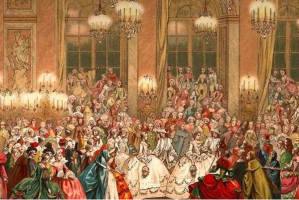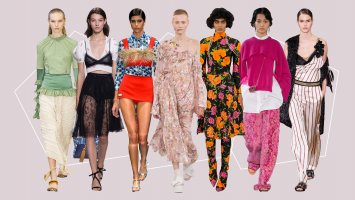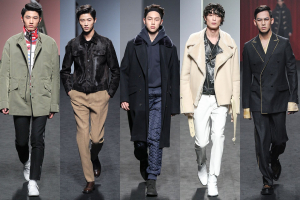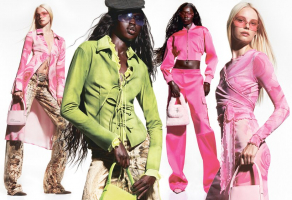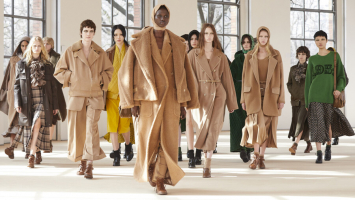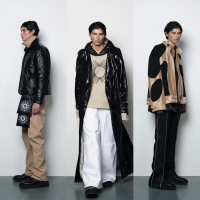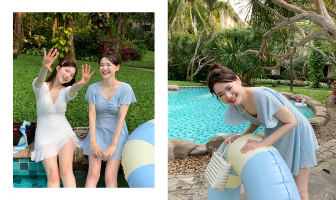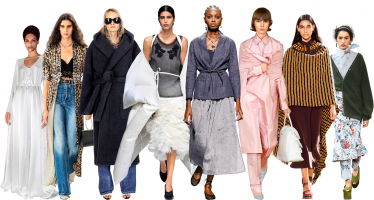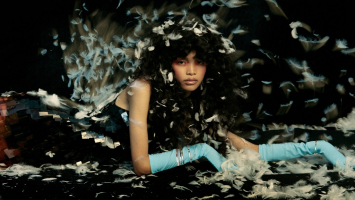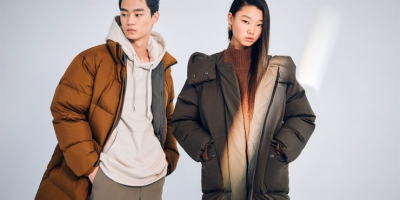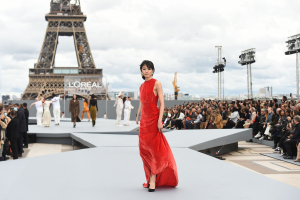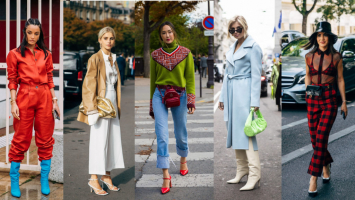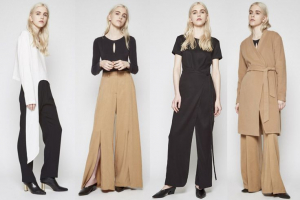Top 10 Outstanding Victorian Era Fashion Trends
Victorian fashion refers to the different styles and fads in British culture that appeared and grew over the Victorian era, roughly from the 1830s to the ... read more...1890s, in the United Kingdom and the British Empire. Fashion underwent several changes throughout this period, including adjustments to styles, fashion technologies, and distribution channels. Fashion was also influenced by various movements in literature, fine and applied arts, architecture, and the perception of gender roles. Now, let's explore the outstanding Victorian Era fashion trends with Toplist.
-
A corset is a set of undergarments made of steel subsequently replaced with strips of whalebone (really, whale baleen). Corsets were a fashion mainstay throughout the 19th century, giving women social prestige, respectability, and the idealized figure of youth despite criticism that they were unhealthy and undoubtedly unpleasant. Frequently referred to as "stays", from the French word "estayer" for "support". Women, the weaker sex, were believed to benefit from corsets by having support.
Corsets, however, never made direct contact with the flesh since cotton chemises were usually worn first. Victorian era women cared for their husbands and reared families. One of the reasons why women wore corsets—and very tight ones at that—to restrict their movements was this. Their waists were further tightened by tightlacing, which was fashionable in the 19th century and projected an even curvier form. New corset designs included ones that fell just below the waist. Additionally, an abdominal corset for pregnant women and sporty women who subsequently participated in activities dominated by males were introduced. It distinguished between low-class women with chubby bodies and high-class women who were free of the burden of household duties. Because it altered female anatomy and increased the risk of miscarriages, infertility, and other risks, it had more drawbacks than advantages.
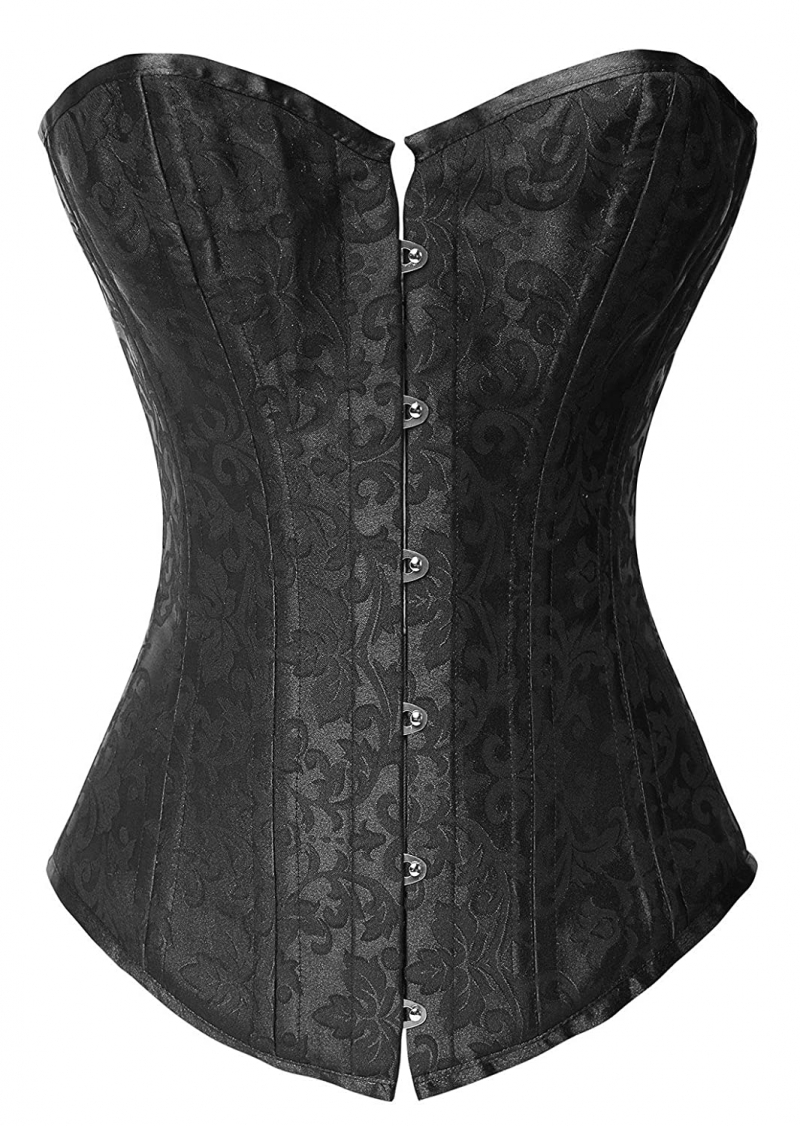
vintagedancer.com 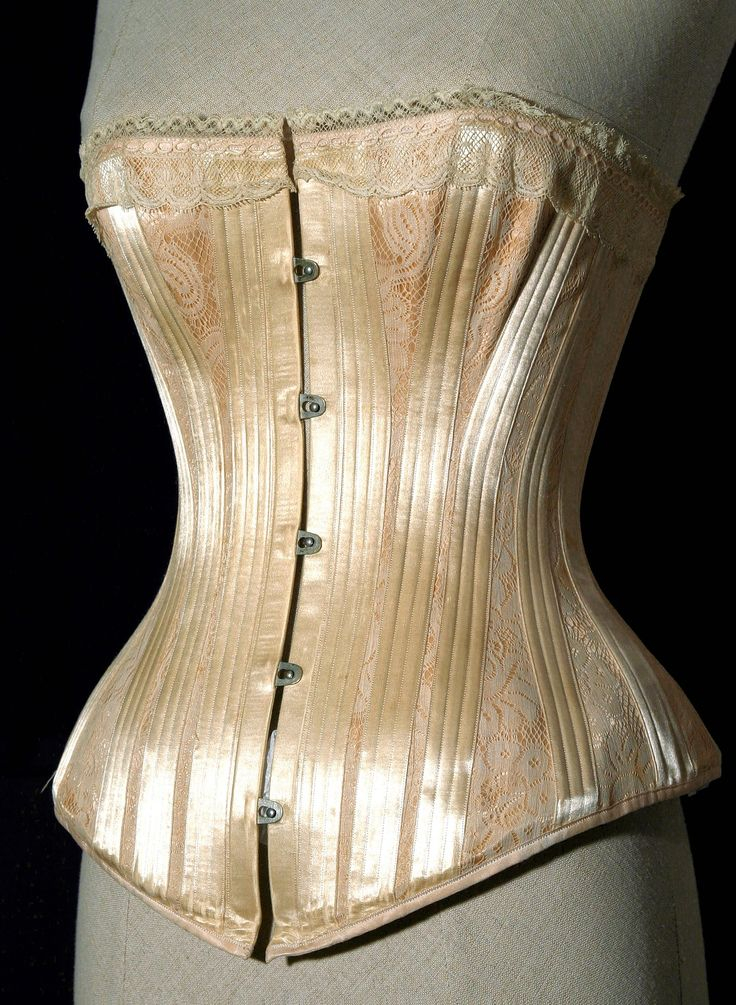
pinterest.com -
Huge skirts held up by crinolines in the early Victorian era, followed by hoop skirts, were the main feature of the silhouette. Hats were modest in size and design to complement the fashion without drawing attention to it; straw and cloth bonnets were the most common. The brims and high, narrow crowns of poke bonnets, which were popular during the late Regency era, became larger until the 1830s, when a woman wearing one could only be seen from the front. They featured rounded brims that complemented the bell-shaped hoop skirts' rounded contour.
On the contrary, there were several bonnets for riding, walking, partying, and domestic use. The most well-known straw hats were plaited in the Italian manner using Tuscan straws. Silk bonnets with the front gathered and the rear knotted were another variety. Cottage bonnets with a continuous brim and crown were first made popular in 1838. Open straw plaits that had been braided with horsehair started to appear in the middle of the 1940s. Velvet was frequently used as a winter hat fabric. A low, sloping open bonnet with a backward slope appeared in the 1950s. The spoon-shaped bonnet was popular in the 1960s. With velvet, crepe, flowers, feathers, and ribbons, it had a very extravagant design.
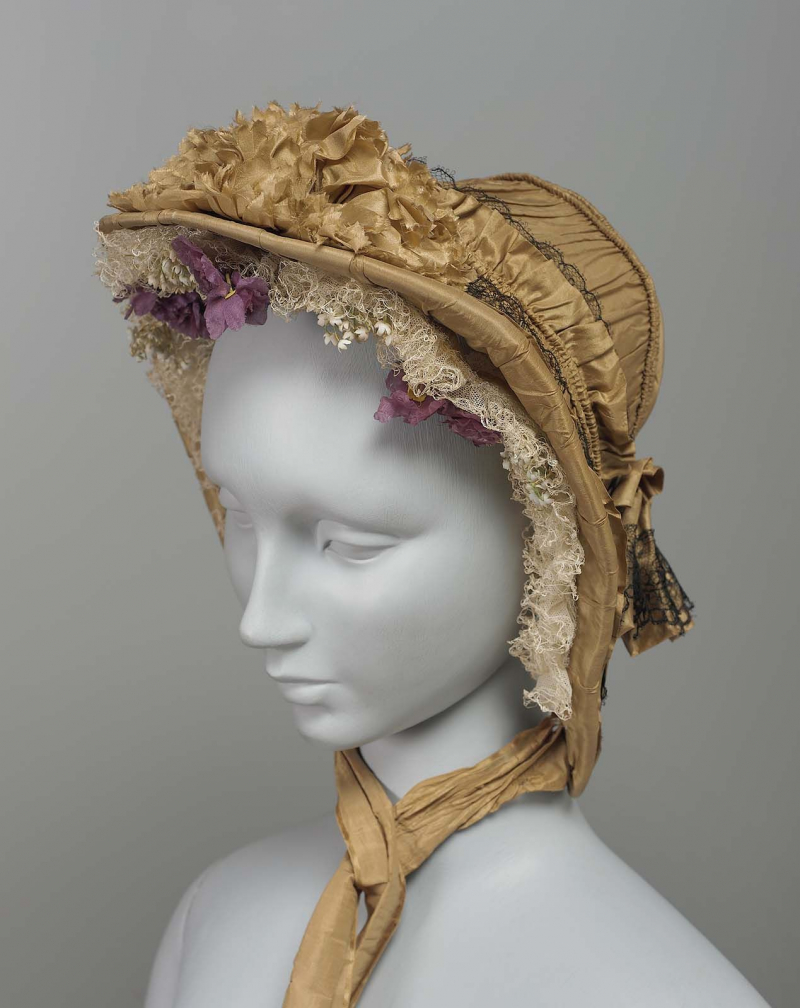
pinterest.fr 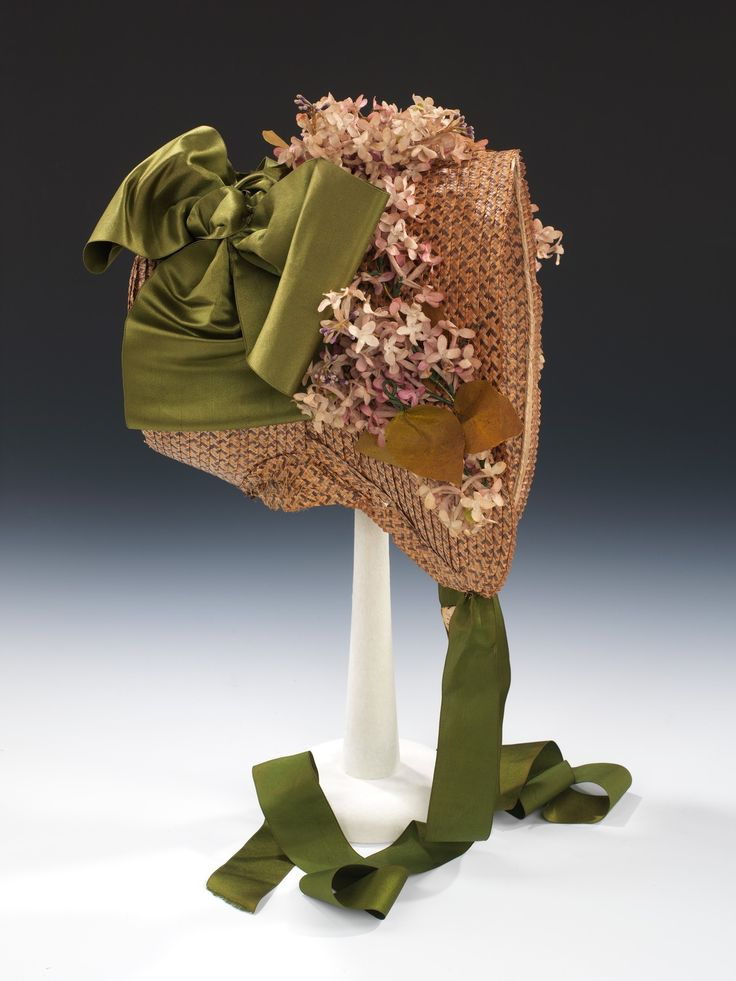
Pinterest -
By today's standards, a decorative fan might appear out of date, yet during the Victorian era, hand fans were a very fashionable fashion item. These fans served as more than simply a fashionable accent piece since they were the ideal blend of attractive and useful. There were various meanings to the way a lady carried her fan. The strict norms of "proper" behavior were well known to Victorians, and they also applied to the use of hand fans. In fact, the acts and motions of women and their stylish hand fans served as the foundation of a new social language.
In the Victorian era, delicate damsels carried hand fans to display their riches and occasionally even their marital status. The way a woman carried her hand fan gave the spectators a lot to speculate about. It may reveal whether she was single, in a relationship, or just plain attractive based on how she carried it, waved, and held it. Journals and periodicals for women covered the topic. It becomes a worldwide language as a result. Hand fans did not exist during the beginning of the 19th century. They came in straightforward designs with thin, beaded silk leaves, and their handles were plain and unadorned. As fans grew increasingly widespread, they were also employed to convey messages or convey emotions. In the 1800s, courtship was a serious business. In public, women were expected to always conduct themselves appropriately. To convey their ideas to others, people often employed hand fans or other accessories.
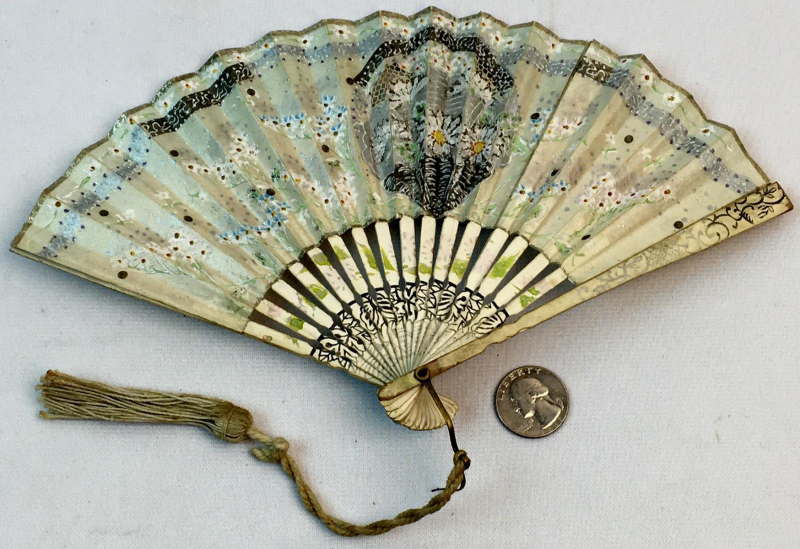
onesourceauctions.com 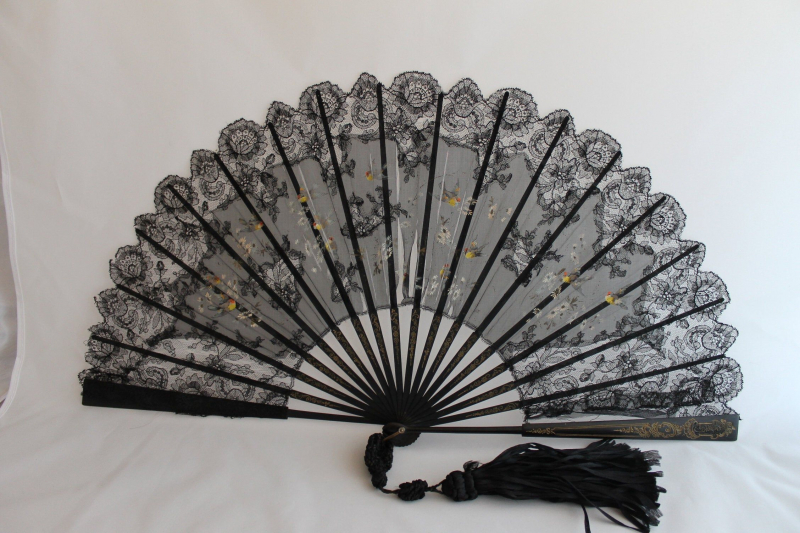
Pinterest -
Canes and walking sticks have been essential for the elderly and infirm for generations. But throughout the Victorian era, a stick frequently performed the equally significant role of representing the riches and height of a healthy man. A man may add a little swagger to his stride by using a cane with ornamental shafts and handles, which were all the rage. Exotic hardwoods and elaborate brass handles hinted to global dominance and trade. From typical knob and derby forms to animals and fantastical creatures, artisans fashioned the handles into a wide variety of shapes.
Men used walking sticks and canes as status symbols of power and money rather than as a means of transportation. Canes, which men of the upper class so adorably carried, frequently conveyed power. However, it was entirely conceived from a male psychological standpoint. In the 17th century, people started using canes instead of swords. In the same manner that kings carried specters, men attempted to wield canes as though discreetly indicating that power was in their hands. They also had a large assortment of canes, not just one or two. The majority of individuals had an ivory-handled cane, which was the most prevalent. The use of wood was unusual in 16th-century Britain.
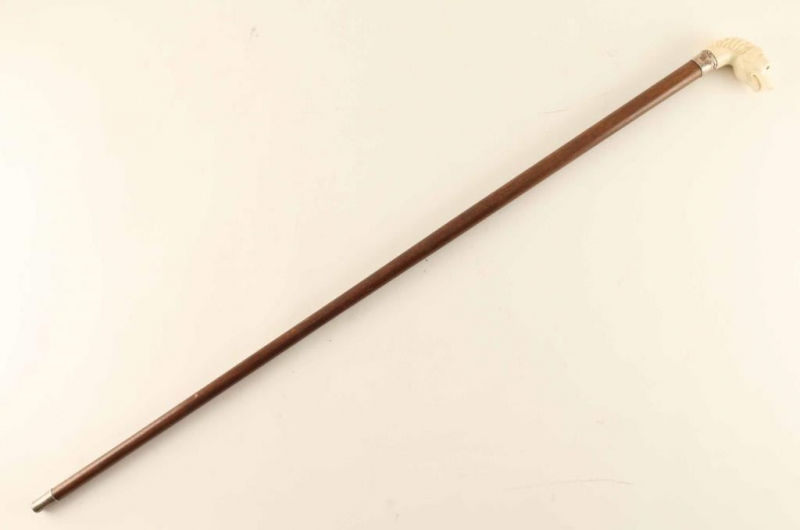
iCollector 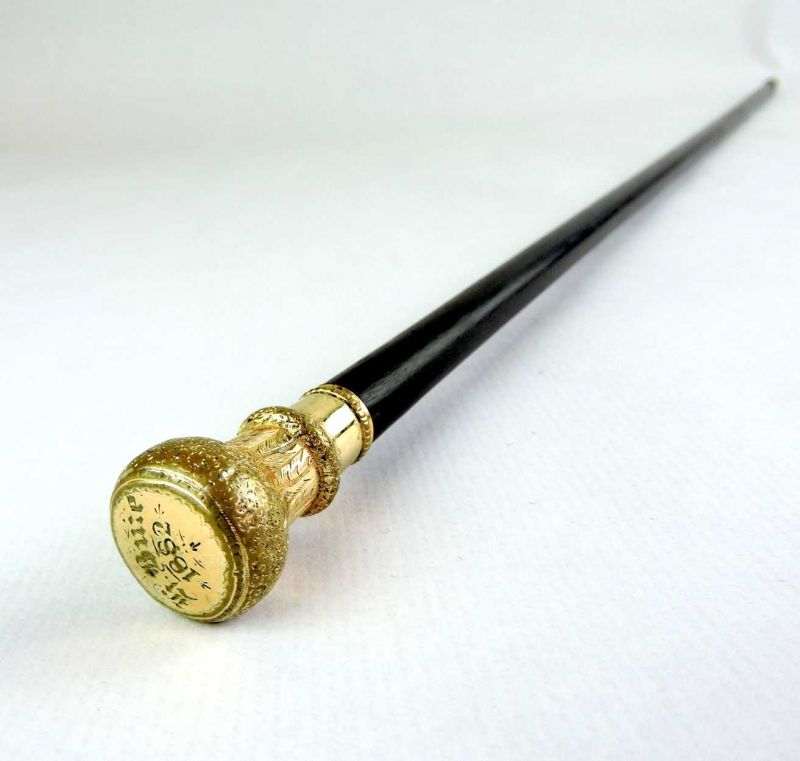
bernardisantiques.com -
The parasol was clearly defined as a sunshade during the 1700s and had already developed into a woman's fashion accessory, tailored and embellished to complement each promenade dress or strolling suit. Around 1800, it became possible to make them foldable, but ribs would crack, paper would shred, and the materials would mildew if kept moist. By the beginning of the Victorian era, metallurgy had advanced, and alloy ribs, notably nickel silver, were in use. German artisans created this kind of thin, strong metal in an effort to replicate the Chinese alloy of copper, nickel, and zinc known as paktong.
The parasols were relatively simple at the start of Queen Victoria's reign, but by around 1850, tassels and frills gained in favor. Every year that followed, the decorations grew more extravagant. The parasol might be decorated with the same bows or flounces as the dress. This was a question of taste, and women chose modest or expensive versions depending on the situation and their ability to pay. Of course, only the rich wore parasols as a regular accessory. For church or a Sunday walk, a poor girl would carry a basic umbrella.
The marquise parasol, a design that tilted at the top so a woman could hold the shaft straight and still provide effective facial shading regardless of the sun's angle, was created in the 1850s. It was a typical representation of luxury and affluence. The elaborate nets and laces that made up parasols were not affordable for everyone. They had a tassel on the top of the umbrella and were made of silk. For tilting angles, some of the exquisite ones had tilting luster. For the have-all, the handles and top were both made of ivory. While wooden handles were typically found on parasols, ivory was considered a luxury.
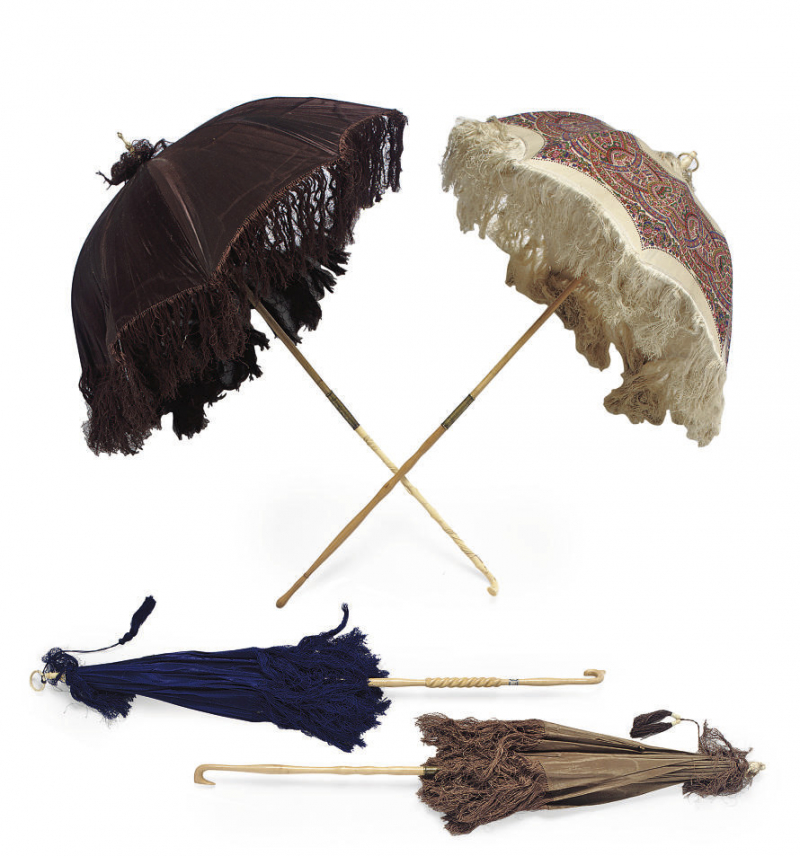
christies.com 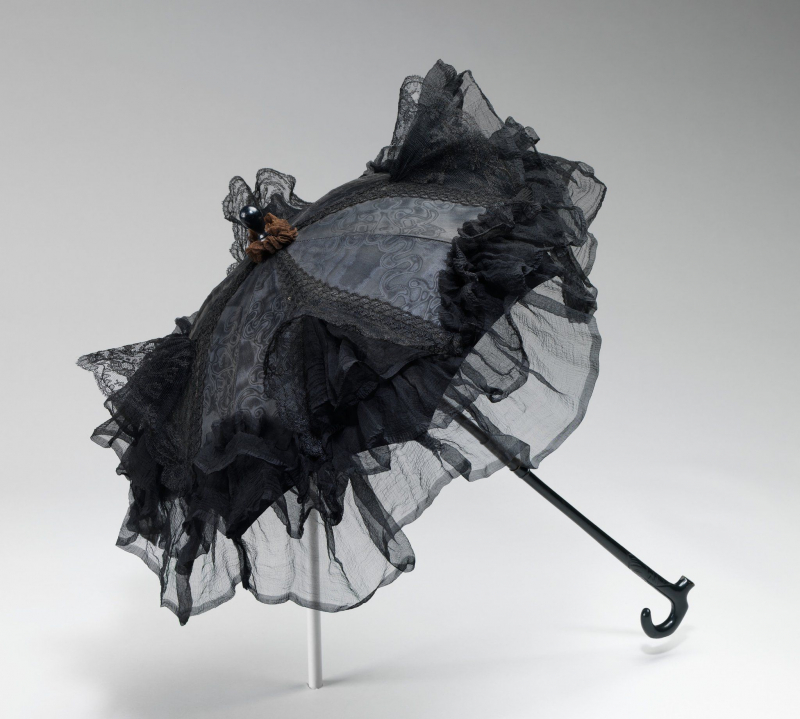
pinterest.com -
Male attire style did not alter significantly compared to women's apparel. In the early years of the century, men wore stovepipe pants. Men were expected to dress professionally, subtly, and elegantly both at work and outside of it. Men on lower rungs of the economic ladder were able to purchase shirts as ready-to-wear clothing flourished. People bought half a dozen detachable collars and cuffs since these were the only parts of their shirts that could be seen by others and because it was difficult and sometimes chaotic to maintain laundering their shirts.
Shirts were often simple white and starched upon washing to give them a crisp appearance. Men preferred patterned shirts in addition to the traditional style. There were various different collars, ranging from high standard collars to wingtip and rounded banker collars. Men's trousers used to have tight-fitting fabric covering the legs, but over time, the trend shifted to a loose tubular form. By the turn of the century, straight pants with a front and rear crease became the norm. Men could wear them interchangeably every day because they were easily accessible and detachable. Early in the Victorian era, men wore rather understated yet colorful clothes. They typically dress in shades of brown, dark green, blue, violet, and black for evening events.
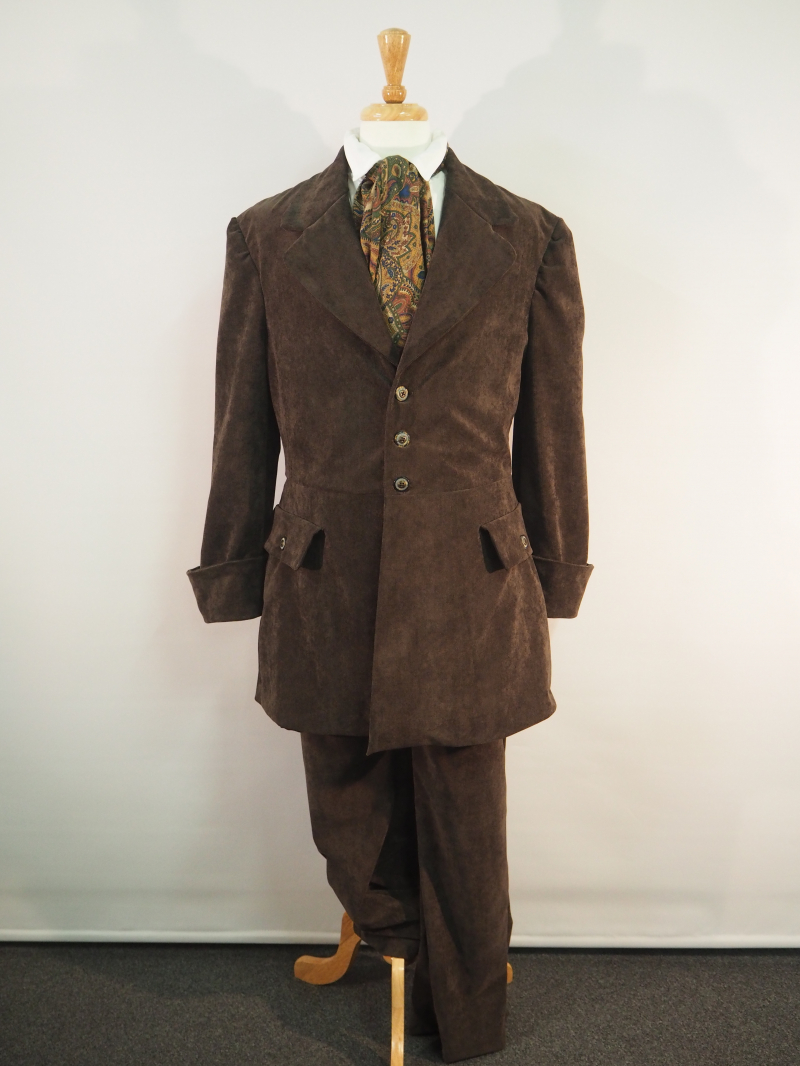
actingthepart.com.au 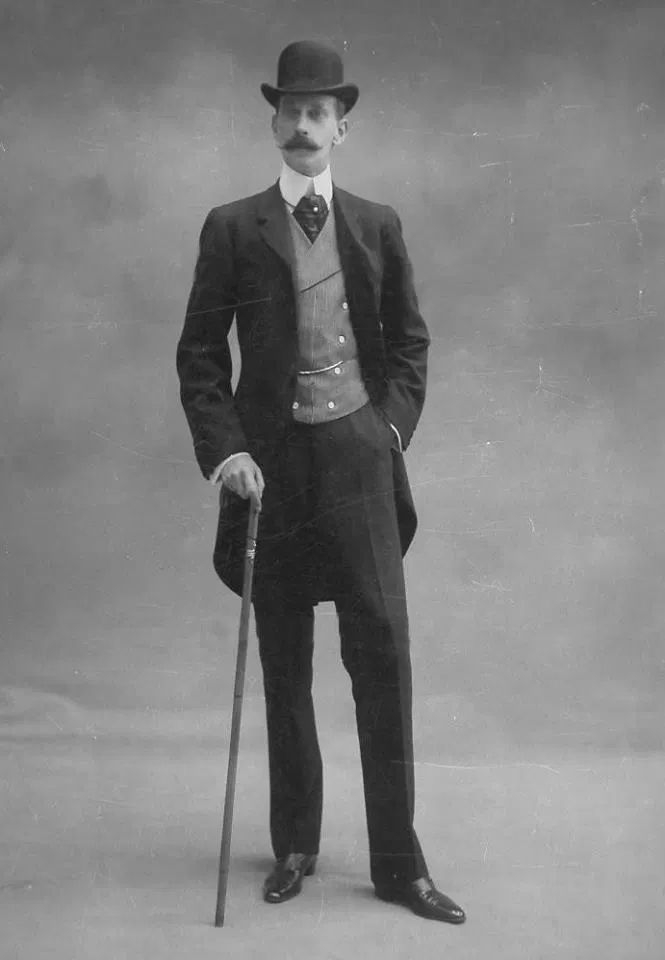
pinterest.com -
People typically think of the Victorian era more than any other historical period when contemplating mourning attire. Even while it has been a staple of clothing for many years before, the Victorian era is probably best famous for it since Queen Victoria wore a mourning gown for forty years after her husband, Prince Albert, passed away. The Victorians considered wearing all black to be a sign of grief. But as with other things, Victorian mourning involved much more than just donning all black. Clothing defined phases of sadness without the person saying a single word thanks to different stages of grieving and distinct textiles for each step. But mourning in the Victorian era struck a fascinating mix between rigid regulations and free interpretation.
The stages of grieving include half mourning, first mourning, second mourning, third mourning, and intense grief (for widows only). Not everyone participated in each level, and not everyone followed the steps in a strict, chronological manner. The steps listed below are meant to highlight the particular selection of materials, hues, and trimmings (or lack thereof) that have been considered acceptable. However, it is not a rigid set of steps that every Victorian took. Even though long-term mourning dress seems strange to us today, Victorian society was dominated by it. Additionally, there were both positive and negative responses to mourning attire. On the one hand, mourning attire encouraged acknowledging loss as a means of grieving.
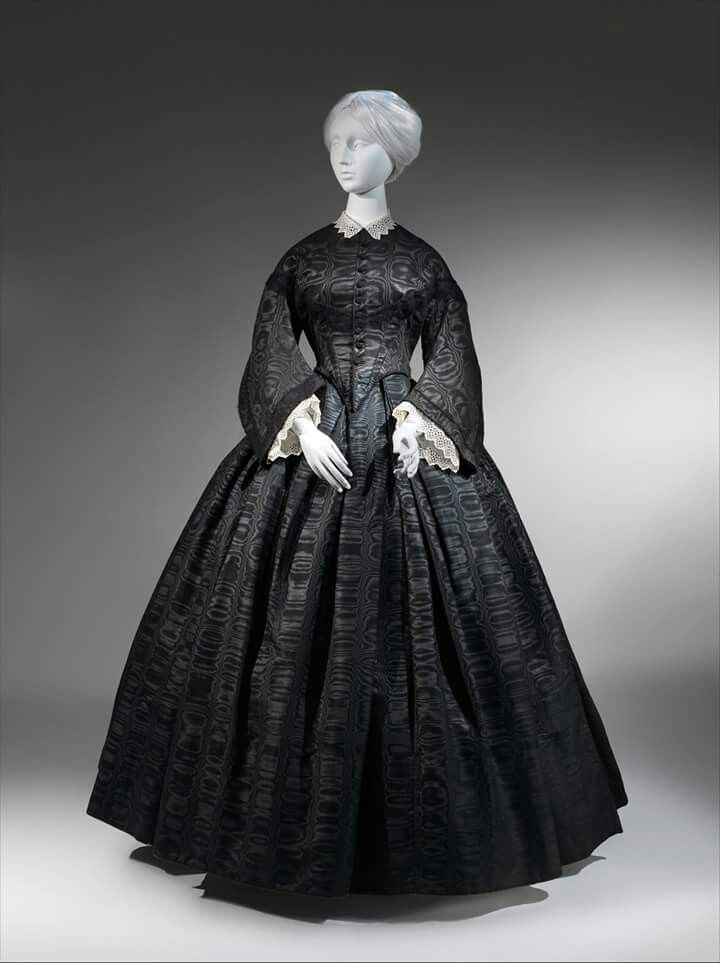
Pinterest 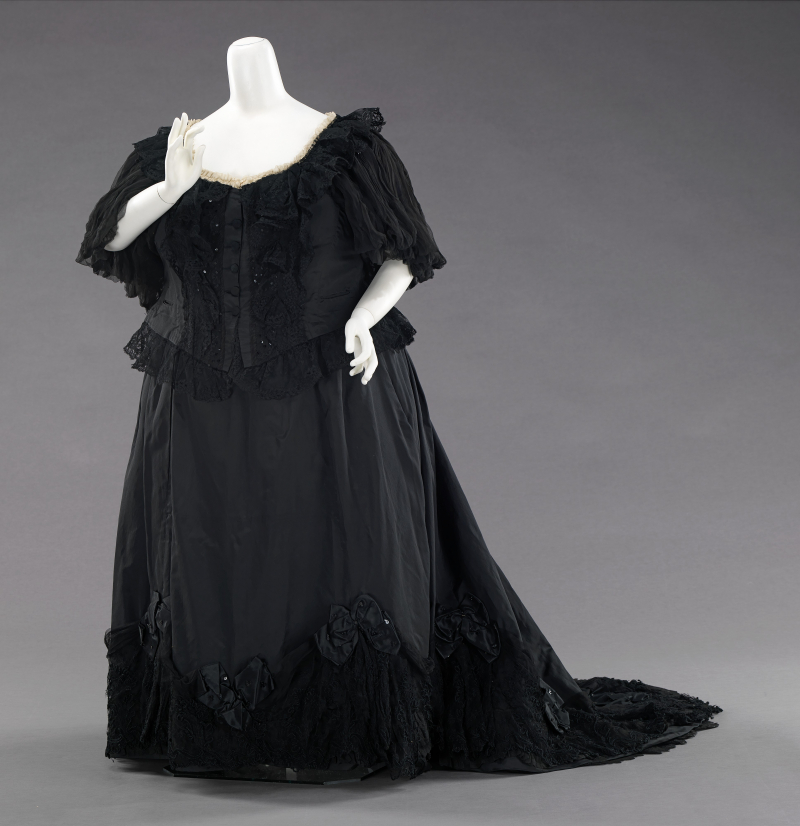
Metropolitan Museum of Art -
The waist is emphasized in Victorian clothing, and the breasts are meant to leap up directly beneath the chin. An item of clothing known as a bodice covers the body from the neck to the waist and is often worn by ladies and girls. The phrase is often used to separate the upper portion of a contemporary dress from the skirt and sleeves, or to a particular form of upper garment popular in Europe throughout the 16th to the 18th century. The term bodice derives from an ancient garment known as a pair of bodies and is etymologically an unusual pluralization of the word "body" (because the garment was originally made in two separate pieces that fastened together, frequently by lacing).
In several European nations' traditional or resurrected folk attire, bodices still exist today. A few bodices had back laces. Later on, both were laces, with eyelets facing one another, like a contemporary tennis shoe. For women who had to put on their own clothes, this was more practical. You can create a dress that is tailored for your body by creating a custom-fit bodice pattern, which will ultimately make you feel great while wearing the dress. Additionally, it highlighted the V-shape form as the Victorian Era's preferred body type. English bodices were gathered and embellished with lace and ruffles, whereas French bodices were tightly held against the skin. Because of its unusual shape, it was frequently referred to as a "fan bodice".
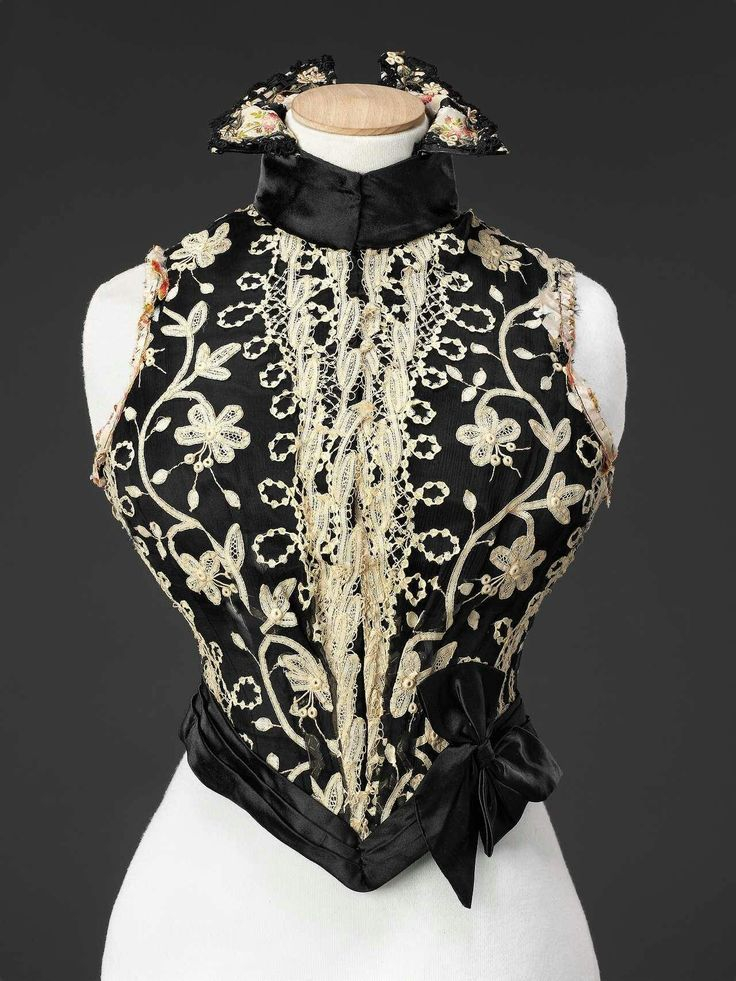
Pinterest 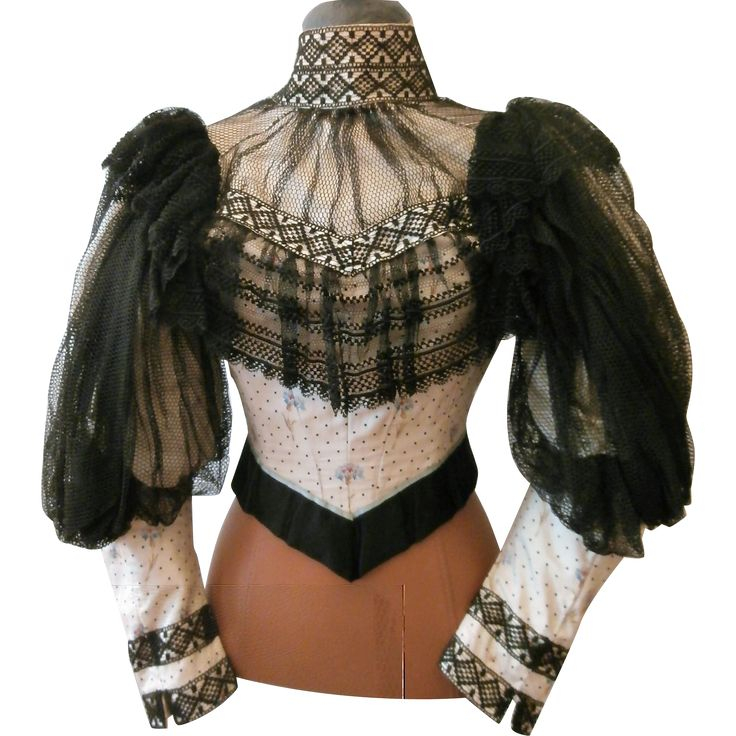
pinterest.co.uk -
One of the ancient items that hasn't yet made an appearance in contemporary fashion is the bustle. However, to prevent the skirt from dragging in the Victorian eras, bustles were worn below the skirt in the back, right below the waist. The back of a skirt will often be pulled down and flattened by heavy fabric. As a result, a woman's petticoated skirt would sag while wearing it on a regular basis (from merely sitting down or moving about).
The rear fullness of the skirts was first carried fairly low and frequently fanning out to form a train in the early phases of the bustle vogue. The loops and gathers of the fabric and the embellishments used during this era mark the change from the enormous crinoline-enhanced skirts of the 1850s and 1860s. The fabric of the skirts fell fairly steeply to the floor, altering the form, and the bustle eventually developed into a much more obvious humped shape on the back of the skirt right below the waist.
After a break, the bustle made a comeback in what is referred to be the second phase. The figure of this phase, which became more pronounced in the late 19th century, is distinctive. To sustain the weight of the explosion of textiles that hung over it, an industrial support bustle was created. The gown's back was heavily decorated with bows, frills, lace, pleats, and other embellishments. These fashion trends in clothes turned out to be unsustainable due to their weight as women began to populate the streets at the beginning of the 20th century.
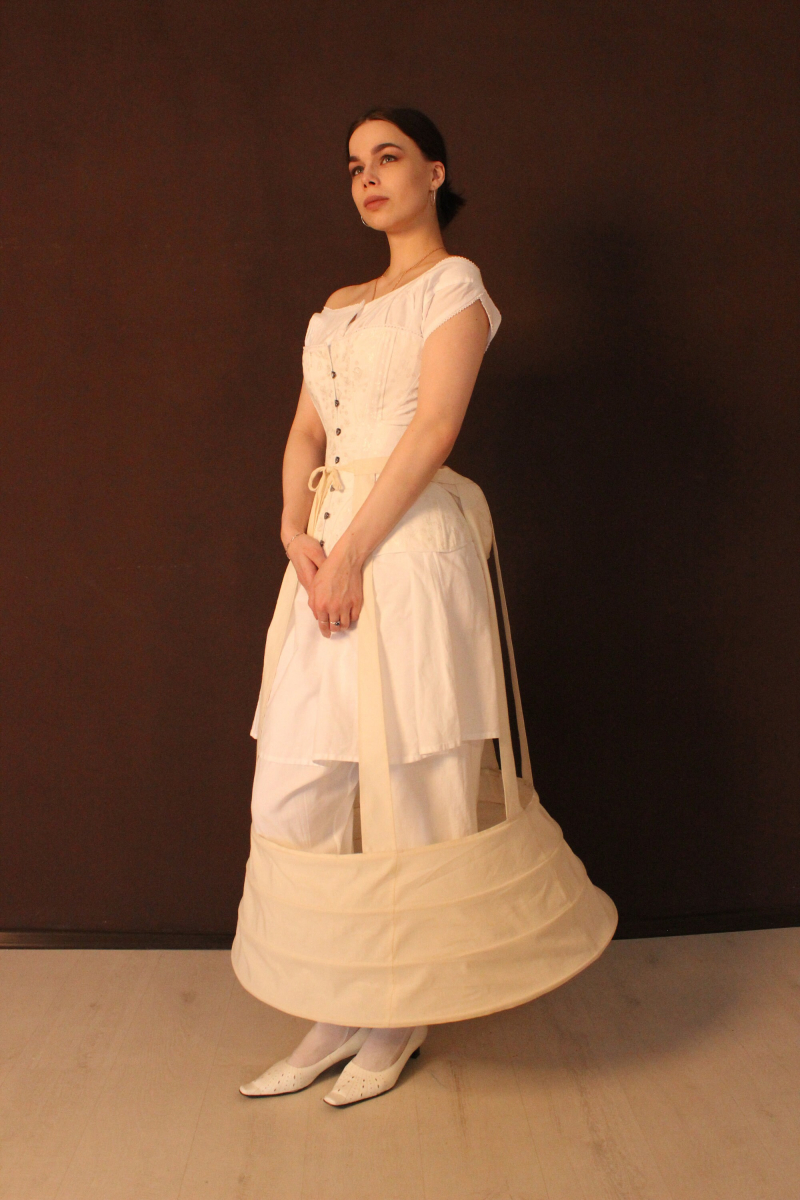
etsy.com 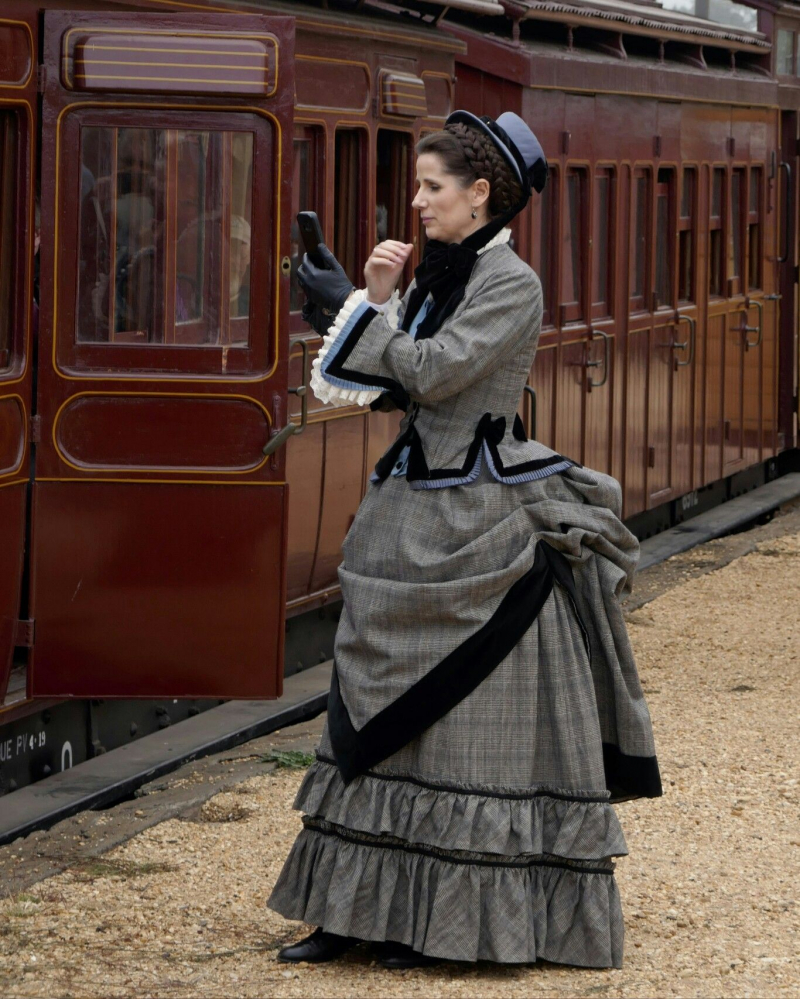
Pinterest -
A structural hoop petticoat called a crinoline is made specifically to hold out a woman's skirt. Despite being created in the sixteenth century, it only started to become popular around the middle of the nineteenth century.The name "Crinoline", which is a mix of the French words crin (horsehair) and lin (line), denotes the original material employed (linen). The term was used to describe the hooped skirts that rose to fame in the middle of the 1850s. Hoop skirts, which were akin to the farthingale of the 16th and 17th centuries, took the role of the crinoline at this time. The farthingales were the sole change, allowing skirts to stretch broader and more completely. The 1850s saw the introduction of the crinoline, a new variation of the hoop that had a long era of popularity. Because new designs and manufacturing methods were periodically introduced, the Victorian crinoline had a variety of appearances.
After the invention of crinolines and hooped skirts, women felt freed from the shackles of petticoats. They wore a dress over the crinoline, which was worn invisibly. In the cold, women favored flannel petticoats. Crinolines were initially dome-shaped in the 1950s, but a decade later they were changed to pyramid forms. It was created as a small hoop in the late 1960s before going out of style in 1878.
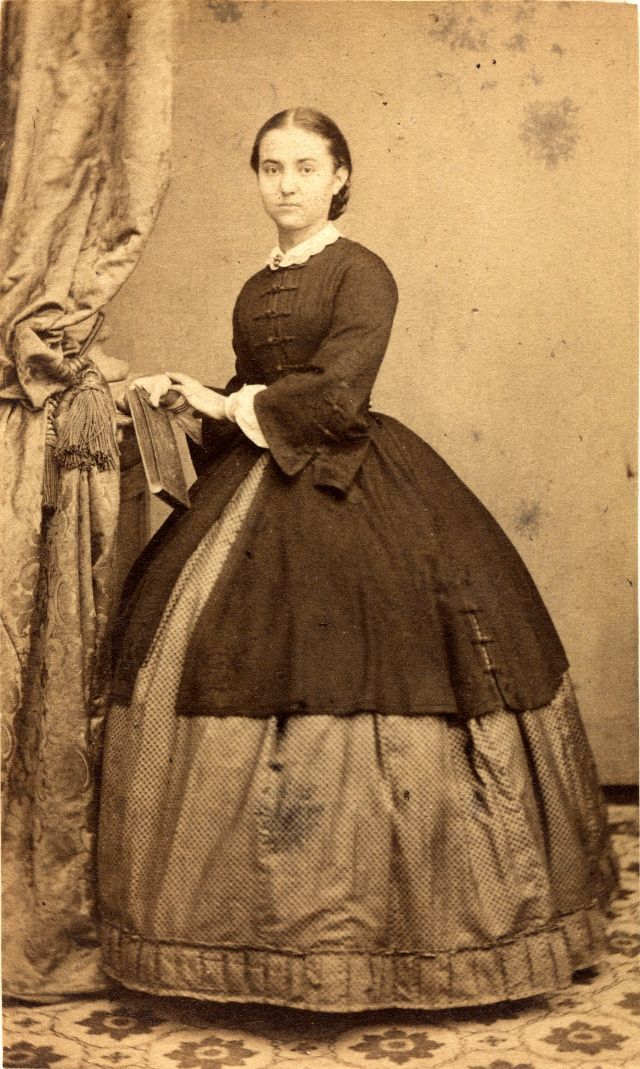
Pinterest 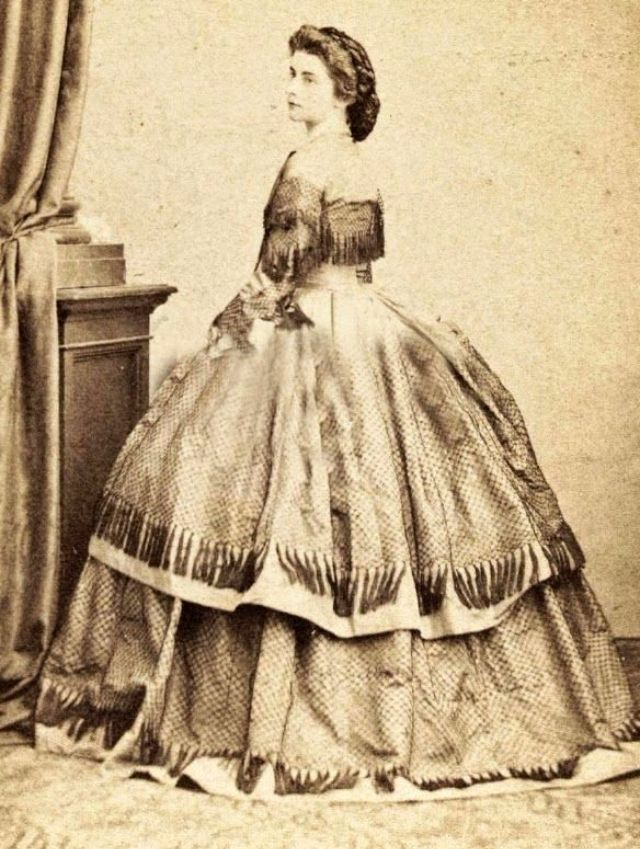
vintag.es












